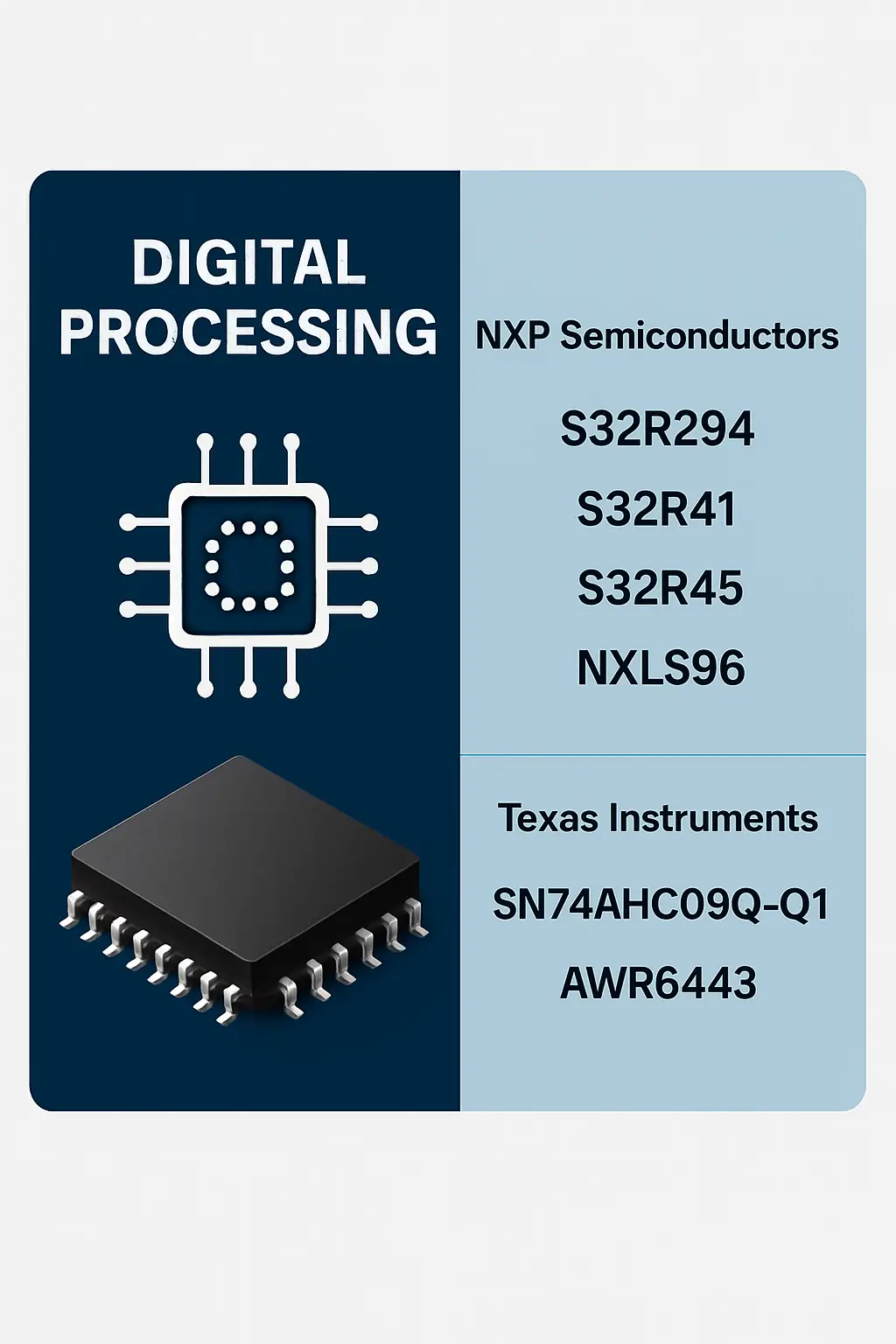Digital Processing
Automotive Electronics is a critical component in modern vehicles, enabling advanced functionalities and enhancing driving safety and comfort. Among its key areas is ADAS (Advanced Driver Assistance Systems) and Autonomous Driving, which rely on various sensors and processing units to assist drivers and eventually achieve full autonomy. Within this domain, Radar Systems play a vital role by providing accurate distance and speed measurements of surrounding objects. These systems are essential for features like adaptive cruise control, collision avoidance, and blind-spot detection. The Digital Processing layer processes the radar data, interpreting it to support real-time decision-making. This technology is widely used in both passenger cars and commercial vehicles, contributing to safer and more efficient transportation. It supports functions such as lane-keeping assistance, automatic emergency braking, and pedestrian detection. As the automotive industry moves towards smarter and more connected vehicles, the integration of radar and digital processing technologies continues to evolve, offering enhanced performance and reliability. These systems are designed to operate in challenging environments, ensuring consistent and accurate performance under various weather and road conditions. Their applications extend beyond driver assistance, supporting autonomous vehicle development and smart mobility solutions. Overall, Automotive Electronics, particularly in ADAS and radar systems, represents a significant advancement in vehicle technology, improving safety, efficiency, and the overall driving experience.
Details
Digital Processing

Related Parts
| Series Name | Description | Manufacturer Name | Attribute Description |
|---|---|---|---|
| NXP Semiconductors | 32-bit ARM Cortex-M7 core, up to 500 MHz, automotive radar processor, integrated memory, safety features (ISO 26262 ASIL-D), low-power modes, advanced signal processing, multi-core architecture, 2 MB flash, 512 KB SRAM. | ||
| NXP Semiconductors | 32-bit ARM Cortex-R52 cores, up to 1.2 GHz, automotive radar processing, integrated memory, safety-compliant (ISO 26262 ASIL-D), advanced signal processing, low-latency, multi-core architecture. | ||
| NXP Semiconductors | 32-bit Arm Cortex-R52 core, 800 MHz, 2 MB flash, 512 KB SRAM, 28 nm FD-SOI, automotive radar processor, supports ASIL-D safety, integrated DSP, multi-core capable. | ||
| NXP Semiconductors | 32-bit ARM Cortex-M4F MCU, 180 MHz, 512 KB Flash, 128 KB SRAM, 12-bit ADC, UART, SPI, I2C, USB, CAN, operating voltage 1.8–3.6 V, -40°C to +105°C temperature range. | ||
| Texas Instruments | Quad 2-input AND gate, 2.0-V to 5.5-V VCC, ±24-mA output drive, 5-ns tpd, low power consumption, operating temperature: -40°C to 125°C, suitable for automotive applications. | ||
| Texas Instruments | 32-bit RISC-V MCU, 4-core 225GHz radar processor, integrated 77–81GHz FMCW radar, 4T4R antenna, 1.5MB RAM, hardware accelerator for object detection, supports automotive ADAS applications. | ||
| Texas Instruments | 3D mmWave radar sensor, 60-64 GHz, 3TX, 4RX, DSP, MCU, FFT processing, low power, integrated antenna, supports object detection, range, velocity, angle measurement, industrial temperature range |








.png?x-oss-process=image/format,webp/resize,h_32)










